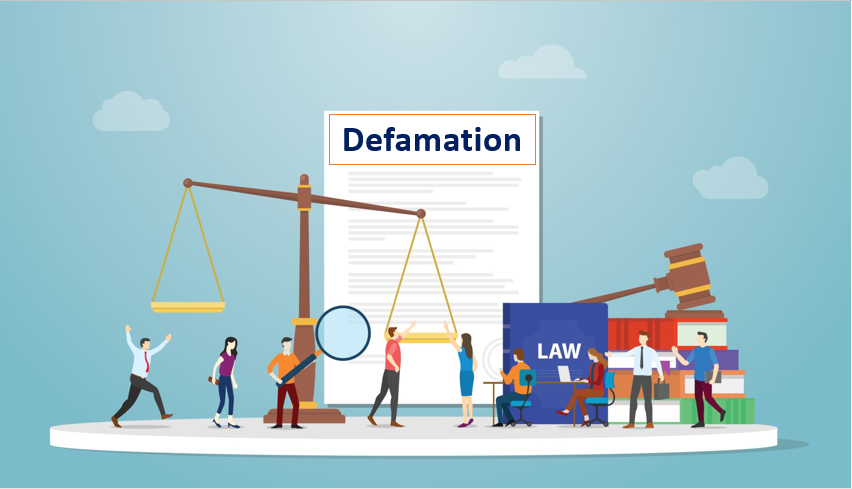Published on 21st March 2025
Authored By: Riya Kumari
Jamia Millia Islamia National University, New Delhi
ABSTRACT
The present world is facing the challenge regarding proper management and disposal of plastic waste which is the result of the consumption of massive amounts of plastic. This massive pile of plastic waste is the result of a lack of technical skills for managing hazardous waste, insufficient infrastructure and machinery for recycling and recovering, and above all lack of rules and regulations. It is an urgent need to spread awareness about its uses and routine management as part of our lifestyle. In today’s world, plastics are becoming more prevalent in our everyday activities. They are widely utilized for packaging in various industries, such as food and beverages, cosmetics, pharmaceuticals, and other manufacturing sectors for efficient and safe delivery of end products. Plastics being non-biodegradable materials have many adverse effects on the environment if not processed and managed properly. This article aims to review different types of plastic waste management strategies, various kinds of waste disposal methods and what are the laws being enacted for the regulation of plastic waste management and its disposal. Herein, we have also discussed the problems caused by the inadequate processing of plastic waste and the emerging trends around the world regarding plastic waste management and environmental protection.
Keywords
Plastic waste; Environment; Waste disposal; Recycling; Regulations; Legal frameworks
INTRODUCTION
Plastic is a petroleum-derived non-biodegradable substance and it is one of the major inorganic solid waste fractions in our daily municipal solid waste. Due to increasing urbanization and industrial development, they are in high demand and this increasing demand leads to high consumption of plastic. Plastic is a ubiquitous source, it present in every aspect of our lives like household, construction, packaging, etc. It has a polymeric structure that provides low thermal and electrical conductivity and high durability. They are chiefly of two types- thermosetting and thermoplastics. Thermosetting plastics having cross-linked structures provide high mechanical strength, thermal stability, and corrosion resistance. On the other hand, thermoplastics have linear chain structures which provide them flexibility to modify into any shape by applying heat.[1] In addition to making life easier for people, the growth of plastics produces a lot of garbage, which is dangerous and endangers the environment and all living things. Single use plastic products contribute about 50% of total plastic waste around the world. The process of reducing, reusing, recycling, and responsibly disposing of plastic waste is known as plastic waste management.
PLASTIC WASTE MANAGEMENT STRATEGIES
There are several methods involved in the management of plastic waste. These are as follows:-
- Reduction of plastic waste generation
- Reuse of plastic products
- Recycling techniques and technologies
- Material recovery methods
- Waste disposal techniques
There are many ways to reduce plastic waste generation which involves single-use plastic which is frequently used as grocery bags, disposable cutlery, plastic water bottles, and so on should be replaced with reusable tote bags, silverware, and reusable bottles. Beauty products with natural exfoliate should be prioritized over products with plastic scrubbers as these are harmful to marine life because they can pass through water-treatment process.[2]
The reuse of plastic waste produced during the manufacturing process involves the treatment of these materials and incorporating them back into the production process. To reuse plastics, they must first be separated by type, and then crushed into powder or pellets. While reused plastics are often of lower quality due to thermal degradation, blending them with the original plastic helps maintain the desired properties. The proportion of reused material varies depending on the plastic type.[3]
The process of recycling plastic waste is broadly done in two ways which are mechanical recycling and chemical recycling. Mechanical recycling starts from the collection of plastic waste from households, businesses, and other industries and separating it by type and color. Then, the plastic is fragmented into smaller pieces by the shredder and then it is processed into secondary raw materials which are used to make new products. The process of chemical recycling takes place through various reactions which are pyrolysis, gasification, hydrocracking and depolymerization. Pyrolysis is the process of breaking plastic waste into smaller molecules using heat. Gasification is the process of breakdown of plastic waste into syngas which can be used for making new hydrocarbons.
A material recovery facility is a specialized setup for separation and recycling that receives wastes, separates them into different types, and prepares recyclable material for marketing users to end-user manufacturers. The benefits of a material recovery facility involve reduction in the amount of waste that ends up in the landfills, it reduces the demand for raw materials and also reduces pollution from manufacturing new products. There are two types of material recovery facilities which are clean material recovery facilities (that are not mixed with waste materials) and dirty material recovery facilities (that are mixed with other waste materials).[4]
WASTE DISPOSAL METHODS
Waste disposal is the final step in the process of plastic waste management. There are following methods for the waste disposal as follows-
- Landfilling: In this method, waste that can’t be reused or recycled is placed in low-lying areas of the city, with a layer of soil added on top after each waste layer. After the completion of this process, the area is restricted from construction for 20 years and can only be used as a playground or park.[5]
- Incineration: In this process, controlled combustion of garbage is done to reduce it to incombustible substances such as ash and gas. The resulting exhaust gases are toxic so they are treated before being released into the air. It reduces waste volume by 90% and can generate electricity. However, it is criticized for producing greenhouse gases, making it less environmentally friendly.[6]
- Recycling: It is the process by which waste products are reutilized by making them go through a condensation process.
- Biodegradable plastics: Biodegradable plastics decompose with the aid of living organisms, offering a possible solution to plastic waste issues. However, there are concerns about the potential release of metals as they break down.
COMMUNITY LEVEL WASTE MANAGEMENT
Community-based waste management is a program in which local communities work together for the management of plastic waste. These programs are run through the contributions of the members of different communities working together. Local authorities, NGOs, or private sector partners are the chief constituents of community-level waste management. It helps people feel responsible and makes them learn about waste management and how it benefits their environment. It encourages direct accountability of community members, tracks waste collection in society, and efficient utilization of valuable and reusable products. It is an efficient and effective approach to the challenges of waste disposal and recycling. It is a decentralized model which promotes sustainability by involving local communities in waste management practices.
LEGAL FRAMEWORKS ON WASTE MANAGEMENT[7]
We often ignore the consequences of the increasing industrial growth and development which lead to the generation of enormous amounts of waste. It is necessary to impose strict laws and regulations to control and manage this waste management. The Ministry of Environment, Forest and Climate Change governs waste management in our country in collaboration with The State Pollution Control Board set up in various states. Also, certain laws have been enacted to regulate waste management in India. The National Environment Policy, of 2006 stressed not only on disposal of waste but also recycling and treating waste. Certain laws are present to regulate waste management which are as follows-
- Environment Protection Act, 1986: This act empowers the Central government to establish a sufficient protection system to regulate all forms of waste. Section 7 of this act places a prohibition on harming the environment by stating that no person carrying any activity should emit or discharge environmental pollutants. The Environmental Protection Rules, of 1986 were formulated by the government under the power conferred to them by this act which gives them authority to give specific directions, without changing the principle act.
- The Hazardous Wastes,(Management, Handling, and Transboundary Movement) Rules 2008: These rules impose an obligation on the occupier of hazardous substances for the safekeeping of these things. The sale or transfer of any hazardous substance can only be continued after obtaining valid registration from the Central Pollution Control Board (CPCB). The Transboundary shipment of hazardous waste is regulated by the Basel Convention, to which India is a signatory.
- The Plastic Waste (Management and Handling) Rules, 2011: These rules are a set of regulatory frameworks set up to control the use, manufacturing, processing, and recycling of plastic waste. Rule 9 makes it compulsory for every manufacturer of plastic products to register them under the State Pollution Control Board. Rule 10 states that no retailer can provide plastic bags free of cost.
- Bio-medical Waste Rules, 1998: These rules are a set of regulatory frameworks that control the safe disposal of bio-medical wastes. The general rule provided is that bio-medical wastes can’t be kept stored beyond the period of 48 hours untreated. Rule 8 states that every occupier should register under the State Pollution Control Board.
- E-Waste (Management and Handling) Rules, 2011: The main aim of these rules is to regulate the issue of recycling and safe disposal of e-waste. With the growing technological advancement, India is becoming a hub for the IT Sector which results in the production of a lot of e-waste that should be addressed properly and disposed of in a safe environment.
CHALLENGES IN WASTE MANAGEMENT
India faces challenges in waste management. The informal sector plays a very important role in addressing waste. Accumulation of waste in open dumps is the result of insufficient and poor infrastructure. Sometimes, improper disposal of the waste materials leads to unsanitary conditions which causes various health issues. Lack of public awareness and education can make it difficult to promote waste management practices. Furthermore, landfills can become full, limited finances can make it difficult to promote waste management infrastructure and technologies. A lack of efficient sorting and recycling systems can lead to valuable materials ending up in landfills. To address these challenges, better infrastructure should be maintained by providing funds and efficient techniques should be used to treat these wastes.
CONCLUSION
Plastic has become an integral part of modern life due to its beneficial properties, such as being lightweight, strong, versatile, and resistant to corrosion. Since World War II, plastic production has grown rapidly, making it essential in various industries. However, plastic waste has become a major concern because of its negative effects on both the environment and human health. The culture of disposability, inadequate waste management throughout the plastic lifecycle, and excessive consumption have led to significant environmental damage. Plastics exist in various sizes, from large pieces to microscopic particles, allowing them to spread across different environments, including the human body. Managing plastic waste is challenging because plastics vary in type, requiring different disposal methods. Options for disposing of biodegradable and non-biodegradable plastics include composting, anaerobic digestion, recycling, incineration for energy recovery, reuse, value addition, and landfilling. In addition to these disposal methods, numerous global, regional, and national policies and regulations have been introduced to reduce plastic waste and manage its disposal. Concepts such as the 3Rs (reduce, reuse, recycle), plastic trading, and the circular economy encourage reducing material usage and increasing reuse. Given that plastics will continue to be widely used in the future, it is essential for all stakeholders to prioritize research, innovation, policies, and legal measures to (i) reduce plastic consumption and (ii) enhance waste management practices for a more sustainable future. The article also emphasizes the need for greater public awareness and international collaboration to address the plastic waste issue.[8] The management of plastic waste significantly impacts a nation’s environmental performance. Various methods, such as adsorption, coagulation, photocatalysis, and microbial decomposition, help remove microplastics from the environment, though landfilling remains the most common solution. However, landfills pose serious environmental risks, and incineration, while an option, also has negative consequences. More effective strategies include reduction, reuse, and recycling, with advanced technologies improving their efficiency. Recycling offers a promising alternative by repurposing plastic waste into useful products like fuels, energy, and building materials. The implementation of a circular economy can further reduce plastic waste, convert it into valuable products, and provide economic benefits for nations. [9]
REFERENCES
[1] Kibria MdG and others, ‘Plastic Waste: Challenges and Opportunities to Mitigate Pollution and Effective Management’ (2023) 17 International Journal of Environmental Research
[2] Engler S, ‘10 Ways to Reduce Plastic Pollution’ (Plastic Pollution Solutions, 3 July 2024) <https://www.nrdc.org/stories/10-ways-reduce-plastic-pollution> accessed 21 January 2025
[3] ‘Reuse of Plastic Waste’ (ATRIA Innovation, 6 March 2024) <https://atriainnovation.com/en/blog/reuse-of-plastic-waste/> accessed 21 January 2025
[4] ‘Materials Recovery Facility’ (Wikipedia, 24 December 2024) <https://en.wikipedia.org/wiki/Materials_recovery_facility> accessed 21 January 2025
[5] Admin, ‘Waste Disposal Methods – Types of Waste Disposal: Solutions’ (BYJUS, 5 February 2021) <https://byjus.com/biology/waste-disposal/> accessed 21 January 2025
[6] ibid
[7] Post G, ‘Waste Management Laws in India’ (iPleaders, 11 October 2019) <https://blog.ipleaders.in/waste-management-laws-india/> accessed 21 January 2025
[8] Author links open overlay panelP.G.C. Nayanathara Thathsarani Pilapitiya and others, ‘The World of Plastic Waste: A Review’ (Cleaner Materials, 28 January 2024) <https://www.sciencedirect.com/science/article/pii/S2772397624000042> accessed 21 January 2025
[9] ——, ‘Plastic Waste: Challenges and Opportunities to Mitigate Pollution and Effective Management – International Journal of Environmental Research’ (SpringerLink, 20 January 2023) <https://link.springer.com/article/10.1007/s41742-023-00507-z> accessed 21 January 2025


